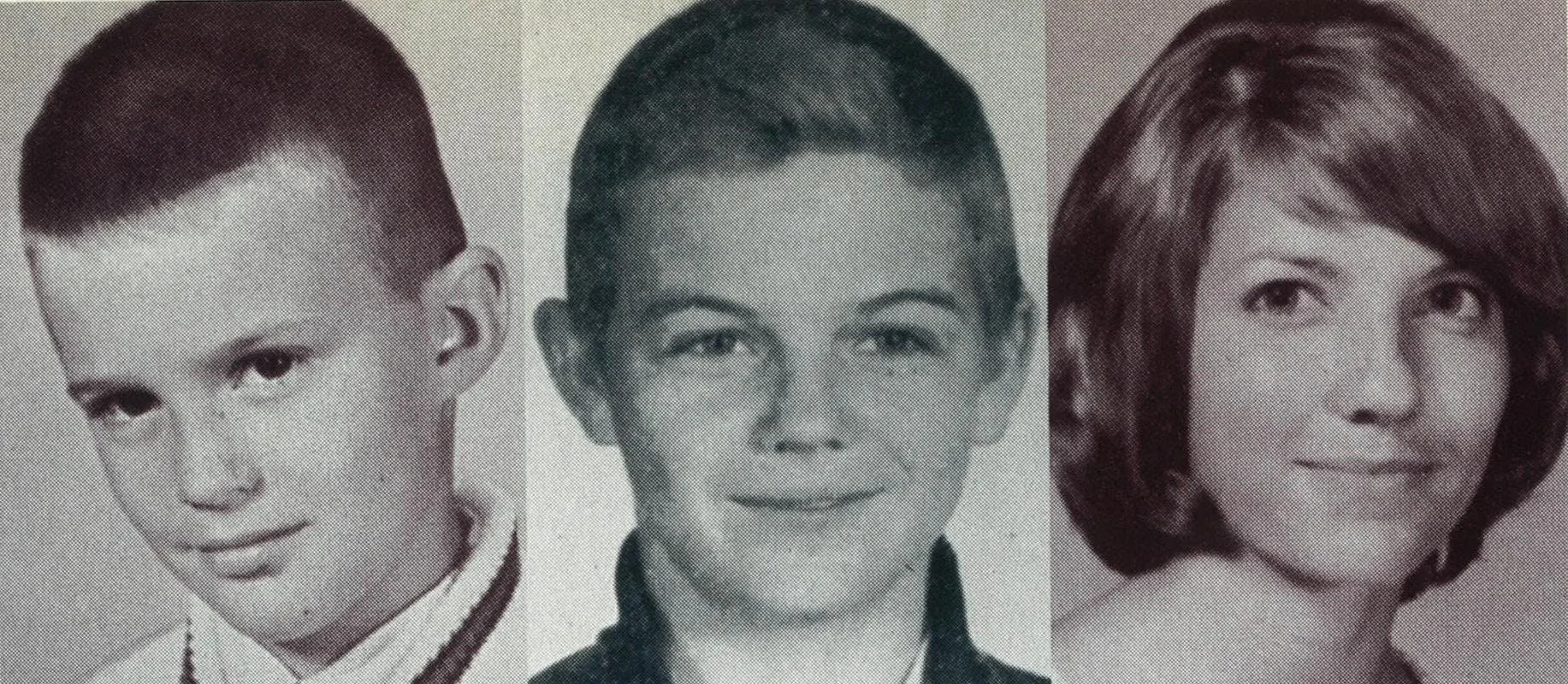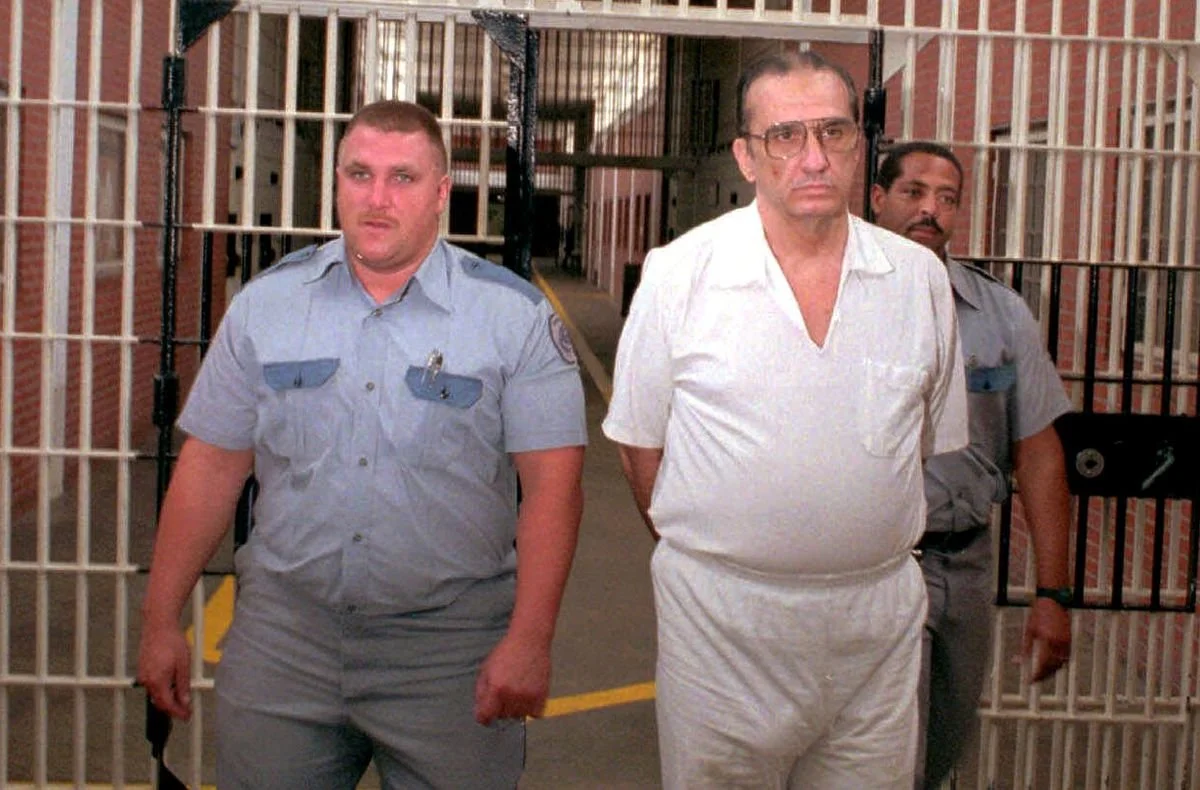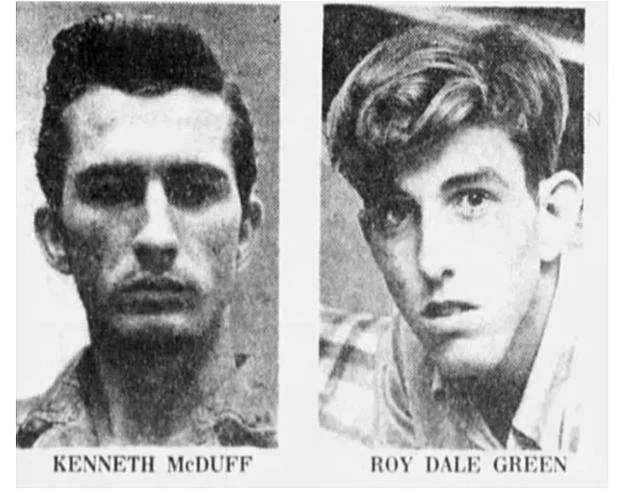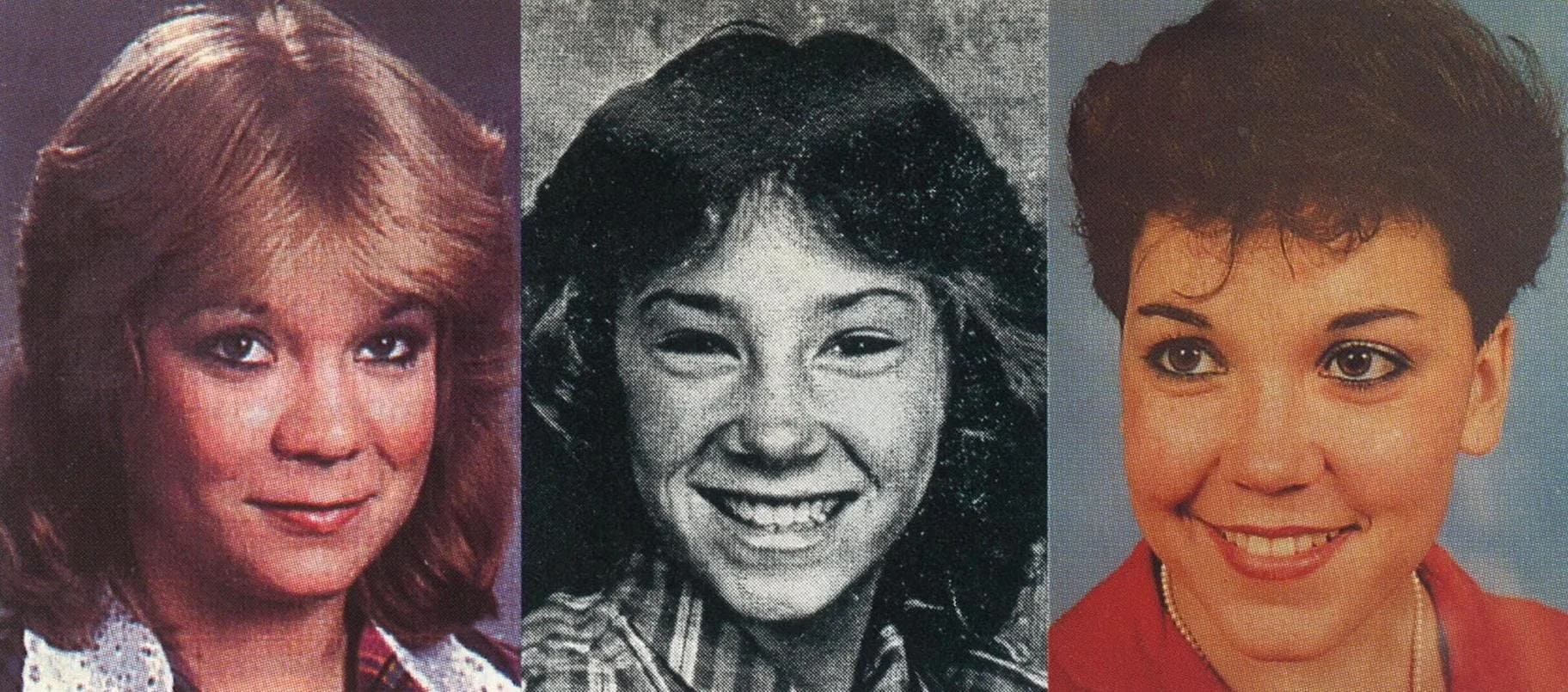Kenneth McDuff
13 min read
In all my years of listening to podcasts and reading about cases, I have never come across the name Kenneth McDuff aka The Broomstick Killer. He is genuinely one of the most sadistic and terrifying serial killers I have ever researched. I also uncovered that he is the only killer in U.S. history to be assigned two different death row numbers. If you have ever believed in second chances, Kenneth will cause you to reconsider.
The Broomstick Murders
The summer of 1966 in Austin, TX, had a cynical beginning. Charles Whitman climbed the University of Texas Tower on August 1 and began a ninety-minute killing spree, firing more than 150 rounds at innocent, unsuspecting students. Killing fifteen and wounding thirty-one, it was the largest mass shooting in U.S. history at the time.
Just five days later, on Saturday, August 6, Kenneth McDuff and his sidekick Roy Green had begun the day pouring concrete at a construction site in Temple, TX. Green was eighteen, and it was the summer between his junior and senior year. Easily impressed by McDuff, who was two years his senior, he agreed to accompany him on a trip to Fort Worth that evening. Eager to go out and have some fun.
After work, they washed up and hit the road, stopping to get a six-pack of beer in Waco along the way. They met up with some friends of McDuff's at Helen's Bar in a small town called Everman just south of Fort Worth. Around 10 pm, Kenneth and Roy started cruising the town streets, looking for girls. Knowing that the local high school was an excellent place to start, Kenneth McDuff steered his Dodge Coronet around the campus until he spotted what he had been looking for - purely by chance.
Near the Everman High School baseball field, a group of teenagers stood talking casually outside of a 1955 Ford. Among them, was a petite sixteen-year-old girl who stood 5'2 and 110-pounds wearing cutoff jean shorts and a red-and-white striped blouse. Her name was Edna Louise Sullivan; she was accompanying her boyfriend, seventeen-year-old Robert Brand, and Robert's cousin, fifteen-year-old Mark Dunnam, on a movie date.
Mark Dunnam, Robert Brand, and Edna Sullivan
Credit: Fort Worth Star-Telegram
McDuff parked his car in a field about 150 yards away, and from his console, removed a Colt special revolver. Then, he exited the vehicle and told Green to "get the stick and follow me." As McDuff slowly approached the Ford, Green did as McDuff told him, grabbing a jagged three-foot, faded red broomstick handle from the back seat. When McDuff reached the teenagers, he demanded the two boys hand over their wallets or he would shoot them, and then he forced the three to get into the truck of their Ford and locked them in. "They got a good look at my face," he told Green. "I'll have to kill them."
McDuff got in the Ford and drove down unlit, narrow county roads with Green following behind in his Dodge. Finally, McDuff pulled into a tiny farm-to-market lane numbered FM 1017 and stopped the car. He opened the trunk and said, "I want the young lady out," pulling her by the arm and instructing Green to lock her in the Dodge. In the trunk of the Ford, the two boys were on their knees, begging McDuff to spare their lives. With an expression of inner peace, he lifted his .38 pistol and shot them both in the face. McDuff shot Robert twice and Mark three times, then lifted Mark by the hair and shot him again. Emptying the chamber of the gun.
McDuff told Green to grab Mark's extra shirt, wipe off the fingerprints on the car, and flatten the tracks in the road. Then, with Edna Sullivan still locked in the trunk, McDuff and Green drove the Dodge south, crossing the Johnson County line and stopped on an isolated dirt road about eleven miles from where they left the boys' bodies. McDuff ordered Edna out of the car, made her undress, and forced her to get in the backseat. He raped her two times, forced Green to rape her, and then raped her a third time with the handle of a broken broomstick. Finally, he told her to put her clothes back on, but the horror was not over just yet.
Kenneth McDuff drove Roy Green and Edna Sullivan to a third location down a gravel road. He took the girl to the front of the car and demanded that she sit down on the road. Then McDuff sat on her chest, forced her head to the ground, and began choking her with the broomstick from the back seat. He pressed hard enough to break bones in Edna's neck. As she began gasping for air and flailing her limbs, McDuff ordered Green to hold her legs down while he crushed the life out of her. Then they threw her body over the fence and headed back home to Rosebud, TX. Stopping along the way to grab a soft drink, dispose of their bloody clothes and bury the boys' wallets.
Credit: New York Daily News
Childhood
On March 21, 1946, Kenneth McDuff was born to John Allen McDuff and Addie McDuff. He was the fifth child of six and spoiled on all accounts. J.A. McDuff was a tight-lipped cement worker who left all parenting matters to his wife, Addie. Addie was a large, overbearing, and protective mother who operated a laundromat across the street from their home in Rosebud. She and Kenneth's three elder sisters treated him like a young god. He always had money in his pocket and wore new clothes to school. He was never required to hold responsibilities or follow any rules. If a problem appeared at school, they were to blame, and Kenneth was innocent. Every teacher was afraid of the McDuff's. Addie became known around town as Pistol-Packing Mama McDuff, once flagging down a school bus and pulling a gun on the driver for kicking her son off for fighting.
Kenneth took pleasure in bullying classmates and intimidating his teachers. He was also known for his maniacal laughter, usually at something no one else thought was funny, and then in an instant - "like turning a light on and off" - the laugh would dissolve into a cold, stern glare. The kids who grew up in Rosebud with Kenneth McDuff recall a day of tremendous joy in eighth grade when Kenneth challenged a popular boy named Tommy Sammon to a fight. Tommy kicked Kennth’s ass. It went down in Rosebud history as the day Tommy Sammon freed the school from the bully. Kenneth never bothered anyone else in his class after that. A few months later, he quit school for good and went to work for his father, pouring cement.
The only friend Kenneth had was his brother, Lonnie. Lonnie was the real troublemaker in the family. He once pulled a knife on his principal and liked to refer to himself as Rough Tough Lonnie McDuff, though he was tongue-tied, and it sounded like "Wuff Tuff Wonnie McDuff." His classmates were too afraid of him to mock. Sometime in the Fall of 1964, when Kenneth was eighteen, he confided in Lonnie that he raped a woman, cut her throat, and left her for dead in a ditch. Lonnie told him to go to bed and forget it.
Criminal History
Not long after telling Lonnie about the woman he killed, Kenneth McDuff was sent to prison for burglary. In March of 1964, he and some other buys committed a string of robberies across Bell, Falls, and Milam County. On January 29, 1965, he was charged with thirteen counts of burglary. McDuff was sentenced to a total of fifty-two years in prison (four years each for thirteen offenses), but since he was eighteen at the time, the four-year sentences ran concurrently instead of consecutively. As a result, he served only nine months and two weeks. He was released on parole on December 29, 1965.
Serving such a sort sentence gave Kenneth McDuff an exaggerated sense of invulnerability. He had grown to 6'3 and 200+ pounds, his broad shoulders and large hands causing him to look even more eminent. His face was accented by a crooked smile and a bulblike Popeye nose. Though prison had not taught McDuff how to make friends, it had taught him how to attract weak, vulnerable sidekicks who could be controlled through intimidation.
One such unlucky mate was Roy Green, who worked for Kenneth McDuff's dad. Green was fascinated with McDuff's tales and sometimes exhibitions of what he called "sexcapades." Once in the bedroom of Green's mother's home, McDuff pinned a girl to the floor and squirted a tube of Deep Heat into her vagina. McDuff bragged that he had raped and strangled several women in his time. "Killing a woman's like killing a chicken," he told Green. "They both squawk."
First Capture
On August 7, 1966, the morning after Kenneth McDuff and Roy Green had raped and murdered three teenagers, Roy accepted a Sunday ride with his friends. When a radio news report broke the story of two murdered boys discovered in Tarrant County, Roy completely lost it. He confessed to his friend what he and McDuff had done, they urged Roy to call the police, and he became the star witness in the prosecution. Roy Green served thirteen years for his part in the broomstick murders and is still haunted by the horrors of that night. However, I do not feel bad for him. But, thanks for turning yourself in, dude.
Kenneth McDuff tried to evade his arrest. He spotted the police waiting for him outside his residence as he returned from a date. The police chased him for several miles and even shot at his vehicle, but they finally caught up to him. McDuff denied knowing anything about the murders and said he was innocent. His mother even made up an alibi for him. Nevertheless, on November 15, 1966, the jury found him guilty, and he received the death sentence.
Credit: Fort Worth Star-Telegram
Released
Two times in 1969 and again in April 1970, Kenneth McDuff came within a few days of his execution date, and each time he was granted stay. In 1972 the Supreme Court passed its landmark decision, ruling that the ability to sentence someone to death without first focusing on the particular nature of the crime and the particular characteristics of the accused - amounted to cruel and unusual punishment and thus was unconstitutional. As a result, all the capital convictions in the country were overturned. Within a few months, the death sentences of 88 inmates on death row in Texas were commuted to life sentences.
McDuff hired a new attorney in 1977, and they wrote to the parole board many times with claims of his innocents. In 1981 he even tried to bribe one board member, Glenn Heckmann, with $10,000 to vote for his freedom. Heckmann immediately reported this, and McDuff received a bribery conviction. However, he was only sentenced to another two years by the jury.
In 1987 the prison system had decided that 750 inmates a week had to be paroled to prevent Texas prisons from becoming overcrowded. That meant the fifteen parole board members had to interview and study the files of at least 1,000 inmates every five working days. Convicts who had been in the system for a long time, like McDuff and whose names came up year after year, were not interviewed anymore but were lumped with similar inmates in groups. If board members bothered to study them at all, their files contained only the most basic information, hardly anything to suggest the true nature of an inmate. By the time McDuff was paroled, eight of every ten parole applications were approved. In a prison system with 60,000 inmates, more than 36,000 received paroles in 1989, the year Kenneth McDuff went free.
Victims
Sarafia Parker was found on October 14, 1989, three days after McDuff was released from prison on parole. She was beaten, strangled, and dumped in a field.
Denise Mason was found on January 7, 1990. She was a sex worker from Austin, beaten and strangled to death.
In July of 1990, the justice system failed again. Just nine months after his release and in violation of his parole, he was charged with making terroristic threats. He directed racial slurs at a group of black teenagers in downtown Rosebud, then chased after one of them with a knife and threatened to kill him. Nevertheless, there was no hearing, no testimony, no advocacy of any kind. The board made no legal decision to reinstate McDuff's parole. An anonymous hearing officer merely decided that there was no reason to keep Kenneth McDuff locked up. He was free again on December 6, 1990.
McDuff moved around frequently - Temple, Rockdale, Tyler, Cameron, Bellmead, Dallas - always staying close to his mother or one of his sisters. In the spring of 1991, he enrolled at Texas State Technical College in Waco and moved into a dorm on campus. Starting then, and in the months that followed, several Waco-area sex workers were reported missing.
Cynthia Gonzalez was found on September 21, 1991. She was on call for a strip-o-gram and never returned home. Found dead in a creekbed in Arlington.
Brenda Thompson, a sex worker, was last seen alive on October 10, 1991. She was tied up in McDuff's back seat as they were stopped 50 feet from a police checkpoint. When police walked toward the truck, she kicked at the window and cracked it several times, trying to get their attention. McDuff then accelerated and drove at the officers, evading them. Finally, he stopped near U.S. Route 84, tied Brenda Thompson up, raped and tortured her. Her body was not discovered until October 3, 1998.
Regina Moore, a sex worker, was last seen alive on October 15, 1991, arguing with McDuff at a motel in Waco. He tied her arms and legs with stockings, raped and murdered her. Her body was not discovered until September 29, 1998.
Colleen Reed was kidnapped in plain sight from a car wash in Austin on December 29, 1991. Her case was actually featured on an episode of Unsolved Mysteries. A tan Thunderbird was seen fleeing from the scene with two men inside. The second man was Alva Worley, another one of McDuff's accomplices who testified against him in court. Worley told police they took turns raping her and that McDuff sexually assaulted Colleen Reed for approximately forty-five minutes until they reached Salado, Texas. McDuff also beat Reed and burned her vagina several times with a cigarette. Worley continued that McDuff bound and gagged Reed with shoestrings and placed her in the car's trunk. Her body was not found until October 6, 1998.
Valencia Joshua, a sex worker, was last seen knocking on McDuff's door on February 24, 1992. Her body was discovered on March 15 in a wooded area behind Texas State Technical College. She had been strangled to death.
Melissa Northrup was kidnapped from the Waco Quick-Pak, where she and McDuff worked together on March 1, 1992. She was pregnant with her third child. She was found in a gravel pit with her hands tied behind her back on April 26.
Regina Moore, Melissa Northrup, and Colleen Reed
Credit: Texas Monthly: Free to Kill
Final Capture
On March 6, 1992, a local state attorney issued a warrant for Kenneth McDuff's arrest. He had moved to Kansas City, Missouri, where he was working at a trash collection company and living under the alias Richard Fowler. On May 1, 1992, McDuff was featured on an episode of America's Most Wanted. Three days later, a coworker recognized McDuff and called the police to inform him he was working as a trash man named Fowler. The Kansas City Police Department searched Fowler's name and found he had been arrested and fingerprinted for soliciting sex workers. A comparison of the fingerprints taken from Fowler to those of McDuff showed they were the same. On May 4, 1992, a surveillance team of six officers arrested McDuff at the dump.
Trial
McDuff was indicted on one count of capital murder for Northrup's murder on June 26, 1992. Alva Worley and several witnesses gave testimonies, placing Kenneth McDuff at the crime scene. Worley said McDuff told him that there was a good-looking girl at a convenience store that he would kidnap. Charles Linch, a hair comparison expert, testified that a hair found on Melissa Northrup's body was identical to McDuff's hair. A Department of Public Safety hair expert, Steve Robinson, testified that a hair found in Northrup's car was similar to McDuff's hair. Even Fred Zain, McDuff's hair comparison expert, admitted that the hairs found in the victim's car would not exclude McDuff as a possible source.
He was found guilty. In Texas, juries determine whether or not an individual convicted of capital murder receives life imprisonment or the death penalty. On February 18, 1993, the jury opted to sentence him to death. Kenneth McDuff attempted many appeals after his conviction, claiming he was innocent and the hair found was false evidence. He finally gave up Colleen Reed's burial location a few weeks before his execution.
Where is he now?
Kenneth Allen McDuff was executed on November 17, 1998. McDuff is buried in the Captain Joe Byrd Cemetery, also known as "Peckerwood Hill," in Huntsville, Texas. Prisoners whose families chose not to claim their remains are buried there. His grave lists only the date of his execution and his death row number, X999055.
A big surprise was the discovery that Kenneth McDuff had a daughter. The woman he told his brother Lonnie that he raped and left for dead in 1964, survived and had his baby. His daughter was twenty-one when she learned that her birth father was a convicted killer. She had visited McDuff in prison and became captivated by him. He tried to persuade her to smuggle drugs and offered to take her to Las Vegas and be her pimp. Disenchanted with the man she once found so fascinating, she moved out of state as far from McDuff as possible.
If you want to learn more about Kenneth McDuff and this massive judicial fuckup, True Crime Reporter is a detailed podcast covering the topic. The host has interviewed police officers who worked the case, authors, victims’ family members, and FBI profilers. Journalist Gary Cartwright said in 1992, "If there has ever been a good argument for the death penalty, it's Kenneth McDuff." Quite frankly, I agree.
McDuff’s grave
Credit: The Bad Boy From Rosebud by Gary Lavergne
Sources
https://www.texasmonthly.com/news-politics/free-to-kill-2/
http://www.garylavergne.com/mcduffmugs.htm
https://www.texasmonthly.com/articles/the-end/
https://www.tshaonline.org/handbook/entries/board-of-pardons-and-paroles
https://serialdispatches.com/kenneth-allen-mcduff/
https://unsolvedmysteries.fandom.com/wiki/Colleen_Reed
https://www.ca5.uscourts.gov/electronic-case-filing/case-information/current-opinions






